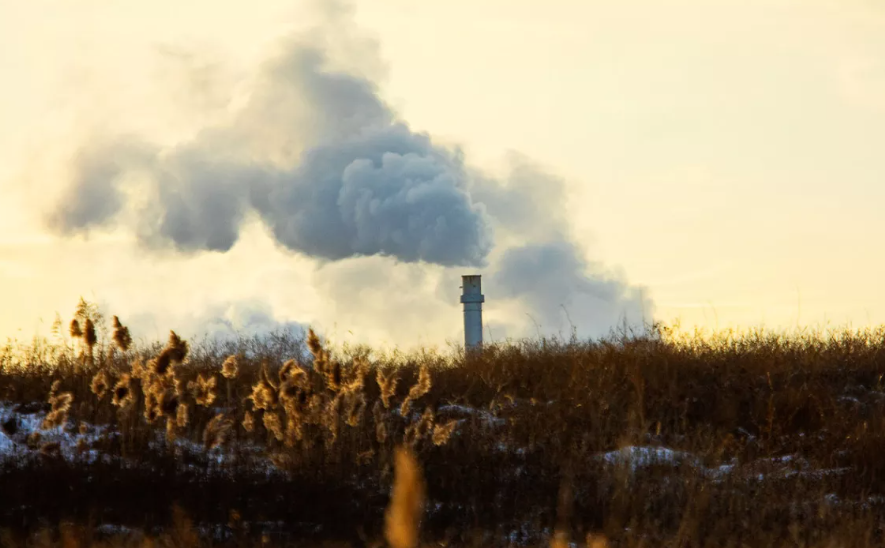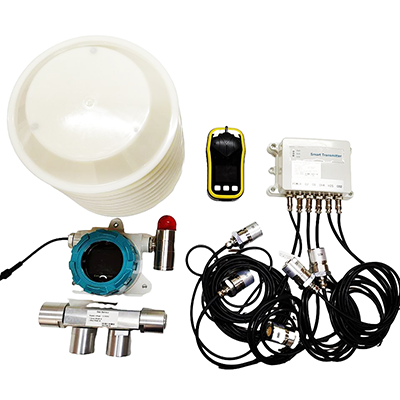A new study reveals how pollutants from human activity impact their ability to locate flowers

Along any busy roadway, the remnants of car exhaust hang in the air, among them nitrogen oxides and ozone. These pollutants, which are also released by many industrial facilities and power plants, float through the air for hours to years. Scientists have long known that these chemicals are harmful to human health. But now, a growing body of evidence suggests that these same pollutants also make life harder for insect pollinators and the plants that rely on them.
Different types of air pollutants react with the chemicals that make up a flower’s scent, altering the amount and composition of the compounds in a way that impedes a pollinator’s ability to locate flowers. In addition to looking for visual cues such as a flower’s shape or color, insects depend on a scent “map,” a combination of odor molecules unique to each flower species, to locate their desired plant. Ground-level ozone and nitrogen oxides react with the floral scent molecules, creating new chemicals that function differently.
“It’s fundamentally changing the scent that the insect is looking for,” said Ben Langford, an atmospheric scientist for the UK Centre for Ecology and Hydrology who researches this issue.
Pollinators learn to associate a unique combination of chemicals that the flower releases with that specific species and its associated sugary reward. When these fragile compounds come into contact with highly reactive pollutants, the reactions alter the number of floral scent molecules as well as the relative amount of each type of molecule, fundamentally changing the scent.
Researchers know that ozone attacks a type of carbon bond found in the floral scent molecules. On the other hand, nitrogen oxides are a bit of an enigma, and it’s not yet clear exactly how floral scent molecules chemically react with this type of compound. “This odor map is very important for pollinators, especially active flying pollinators,” said James Ryalls, a research fellow at the University of Reading. “There are some bumblebees, for example, that can only see a flower when they are less than one meter away from the flower, so odor is very important to them for foraging.”
Langford and other members of his team set out to understand how exactly ozone changes the shape of a flower’s scent plume. They used a wind tunnel and sensors to measure the structure of the scent cloud that flowers create when they emit their signature fragrance. The researchers then released ozone at two concentrations, one of which is similar to what the UK experiences during the summer when ozone levels are higher, into the tunnel with the floral scent molecules. They found that ozone eats away at the edges of the plume, shortening the width and length.
Researchers then took advantage of a honeybee reflex known as proboscis extension. Much like Pavlov’s dog, which would salivate at the ringing of a dinner bell, honeybees will extend a part of their mouth that acts as a feeding tube, known as a proboscis, in response to a smell they associate with a sugar reward. When scientists presented these bees with the scent they would normally sense six meters from the flower, they stuck out their proboscis 52 percent of the time. This decreased to 38 percent of the time for the scent compound that represents the smell 12 meters from the flower.
However, when they applied the same changes to the scent that would occur in a plume degraded by ozone, the bees only responded 32 percent of the time at the six-meter mark and 10 percent of the time at the 12-meter mark. “You see these quite dramatic drop-offs in the number of bees that can then recognize the odor,” Langford said.
Much of the research on this topic has been done in laboratory settings, not in the field or an insect’s natural habitat. To address this knowledge gap, scientists at the University of Reading set up pumps that push ozone or diesel exhaust into sections of a wheat field. Experiments set up in the 26-foot open air rings help researchers evaluate the effects of air pollution on various types of pollinators.
A team of researchers monitored sets of mustard plants in the plots for pollinator visitation. Some chambers had diesel exhaust pumped in at levels below the EPA ambient air quality standards. In those sites, there was up to a 90 percent reduction in insects’ ability to locate flowers they rely on for food. Additionally, the mustard plants used in the study, despite being self-pollinating flowers, experienced up to a 31 percent reduction in some measures of seed development as well, likely as a result of decreased pollination from air pollution.
These findings indicate that insect pollinators themselves face unique challenges due to the current levels of air pollution. But when working in concert with other challenges facing these insects, air pollution is likely to create problems in
We can provide sensors to measure a wide range of gases
Post time: Aug-08-2024


